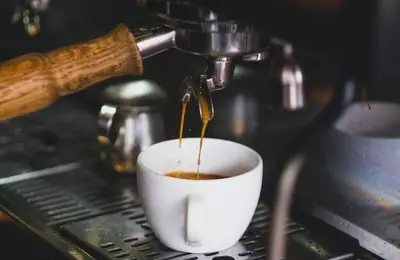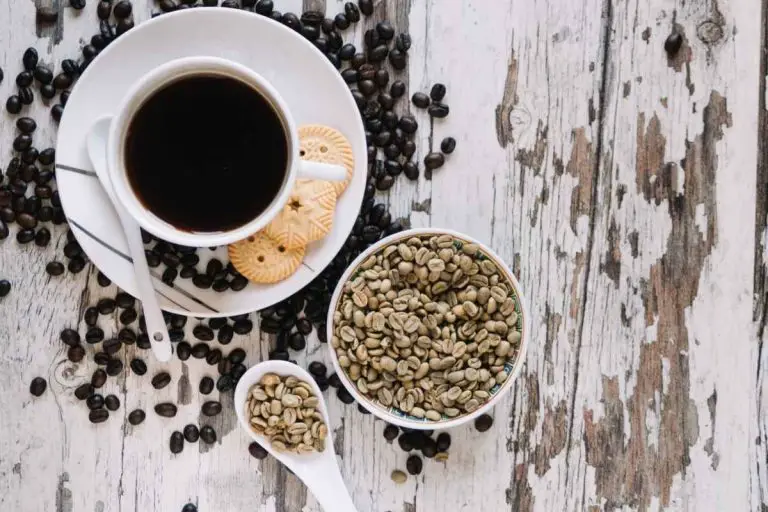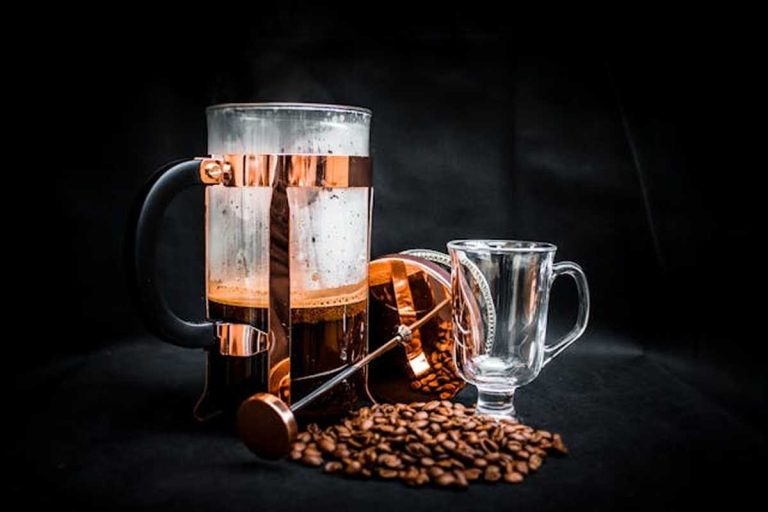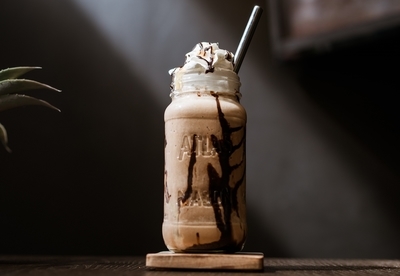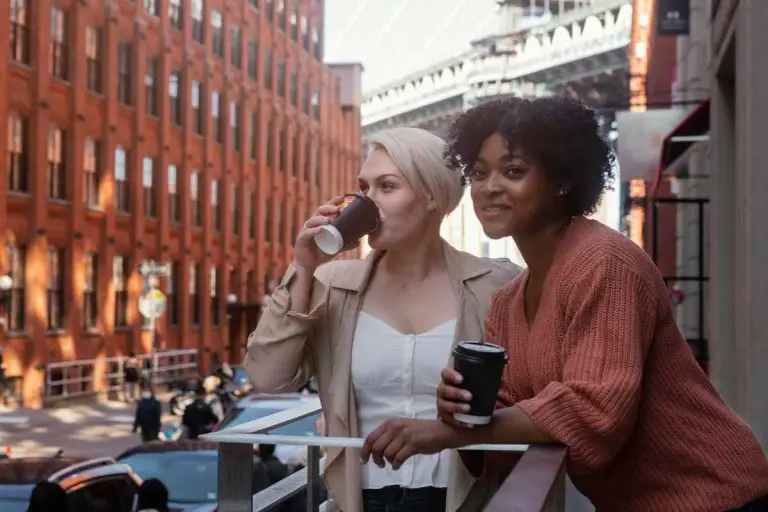Why is My Coffee Bitter? 7 Reasons Why & How to Fix It Forever
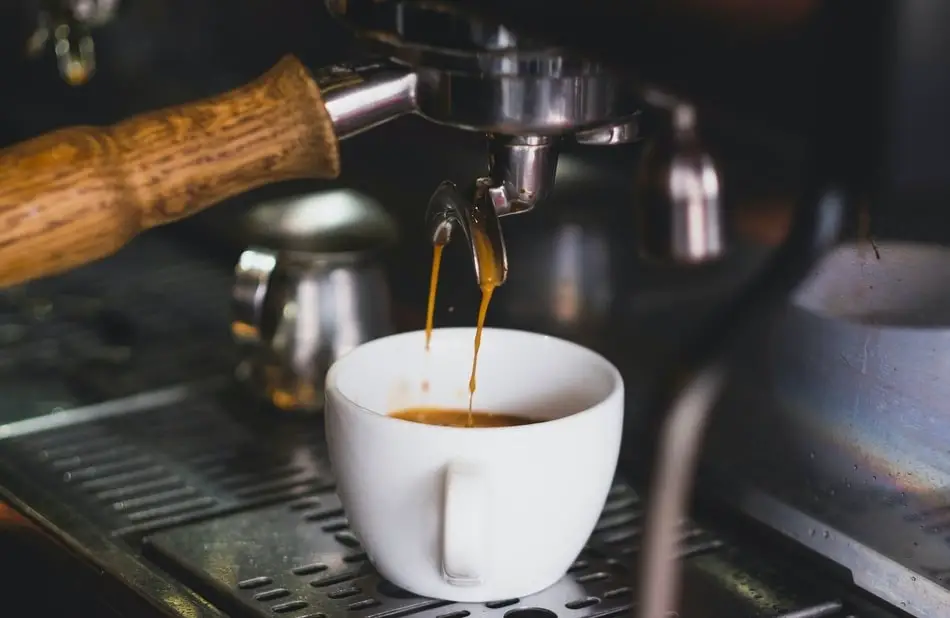
You’re not alone in wondering why coffee is bitter. Many think it’s just part of the taste, but the good news is that good coffee isn’t bitter at all. We’ve put together the seven causes of bitterness so that you can easily fix it.
The seven reasons why coffee is bitter:
- Robusta coffee variety
- Dark roast coffee
- Brewing coffee too long
- Water is too hot
- Coffee grind is too fine
- Too much water with too little coffee
- Dirty equipment
Just like me, you want to enjoy a coffee that’s bitter-free, right? I’m here to share with you how bitter coffee can be a thing of the past.
The seven causes of bitterness and how to fix them
1. It’s the robusta variety
There are two main varieties that make up over 99 percent of the world’s coffee. They are known as arabica coffee and robusta coffee. The robusta variety is very bitter as it contains more bitter compounds.
Around 40 percent of the world’s coffee is of the robusta variety. Robusta is highly inferior to arabica but is popular due to how much easier it is to grow.
Robusta coffee can be described as having a rubbery and ashy taste that is very harsh and bitter. It’s commonly found in instant coffee as well as espresso blends.
The reason for these tastes is threefold. Firstly, robusta can contain up to almost twice as many chlorogenic acids as arabica, which contributes greatly to the bitterness when roasted.
Secondly, robusta contains almost half the quantity of sugar than that of arabica coffee. The result is that the coffee is less sweet, causing the bitterness to be more apparent.
Thirdly, the level of caffeine in robusta is more than twice that of arabica. Caffeine tastes bitter; however, it contributes less than people believe to the overall bitterness.
How to fix bitter coffee caused by robusta variety:
To avoid the bitter taste of robusta coffee, it’s important to buy 100 percent arabica coffee.
Most supermarkets will have at least one 100 percent arabica coffee on sale. It will almost certainly be displayed in large type on the coffee packet to let the consumer know that it’s a premium product.
If the packet doesn’t inform you as to what type of coffee is inside the packet, you can safely assume that it contains the inferior robusta variety.
Good specialty coffee roasters only offer pure arabica coffee. As with any plant, there are many varieties within one strain. The same is, of course, true of coffee. The arabica variety can be further divided into different cultivars or varietals.
Each varietal displays its own characteristics, and specialty coffee roasters will inform you which varietal of arabica that it is. Take a look online and buy yourself a bag. You’ll be amazed at how good coffee can taste.
Now that you’ve bought the best beans you can, there’s something else to watch out for. Just as poor cooking techniques can ruin beautiful ingredients, bitterness can be caused by improper brewing. Here’s how to avoid it.
2. It’s a dark roast
Dark roast coffee is bitter because of the high temperatures used to roast the coffee as well as the extended length of time that it spends roasting. The other reason is due to the chemical process that takes place during dark roasting.
Bitterness is present in all types of coffee as the roasting process breaks down certain acids into bitter compounds.
When coffee is roasted, the chlorogenic acids present in raw green coffee are dehydrated and broken down into bitter-tasting chlorogenic acid lactones.
Whilst the chlorogenic acid lactones provide a certain level of bitterness to coffee, at lighter roasts it doesn’t cause a problem by dominating the overall taste.
However, when coffee is roasted darkly, the already slightly bitter chlorogenic acid lactones break down even further into phenylindanes.
Phenylindanes are overwhelmingly bitter. They contribute that harsh, ashy, bitter taste that is extremely unpleasant and has most of us reaching for the milk and sugar.
How to fix bitter coffee caused by a dark roast:
The only way to avoid the bitterness caused by dark roast coffee is to change the type of coffee that you drink to a good-quality, light roast coffee roasted by a specialty coffee roaster.
Roasted coffee beans can be separated into three main profiles: light roast, medium roast, and dark roast.
All roast profiles contain some level of bitterness, but the level of bitterness in lightly roasted coffee is almost imperceivable.
Good-quality coffee has a pleasing acidity and sweetness coupled with beautiful flavours and aromas.
Coffee that’s lightly roasted shows off the inherent flavours of the coffee. Good specialty coffee roasters roast the coffee to show off and highlight its best qualities.
The natural acidity and sweetness found in good-quality coffee balance out the flavours. Instead of the bitterness dominating the cup, it might be flavours such as chocolate, nut, blackcurrant or blueberry.
Whilst buying a light roast coffee from the supermarket will help a little, it probably isn’t enough on its own.
Cheap supermarket coffee is low-grade, and whilst it may have been roasted a little lighter than other coffees on the shelf, it’ll still be darker than it should be to hide the fact that it’s of poor quality.
Some supermarkets do offer specialty coffee beans for sale. In the UK, Union Coffee Roasters is sold in Waitrose, and Modern Standard is sold in Sainsbury’s.
You’ll pay a premium for these coffees, but it’s well worth it to see what coffee can really taste like. In the UK, the price of a bag of specialty coffee from the supermarket starts at £4.50.
Another way to buy specialty coffee is online. Specialty coffee roasters around the world go to great lengths to source great-tasting beans, which they lovingly roast to order, posting the coffee to your front door.
3. It’s been steeping for too long
Steeping (brewing) coffee for too long results in bitterness. Around a third of a coffee bean is soluble in water, but not everything that the water is capable of dissolving tastes good.
To put it simply, there are three stages of extraction:
- Firstly, the acids are extracted.
- Secondly, the sweet compounds are extracted.
- Thirdly, the bitter compounds are extracted.
You want to stop brewing your coffee during the extraction of the sweet compounds and before you reach the bitter compounds.
What happens when you toast a piece of bread?
As the bread is heated, it becomes more and more brown. However, left to toast for too long, it becomes burned. This is essentially what happens when you brew coffee; it ‘cooks’ for too long, leading to bitterness.
How to fix bitter coffee caused by steeping for too long:
To prevent bitterness caused by steeping for too long, it’s important to time the coffee whilst it’s brewing. You can do this using the stopwatch on your smartphone.
Making coffee is comparable to baking. It’s a bit of a science and for consistent results, repeatability is key.
Also, make sure that you measure the dose of coffee. For best results, use digital scales. But if that seems a little extreme, make sure to use some sort of scoop that you can level off for more consistent dosing.
Using a tablespoon to measure your coffee is impossible to repeat, and so the coffee will turn out differently every time.
By keeping everything the same, you’ll find the coffee’s sweet spot and bitterness will be a thing of the past.
4. The water is too hot
Pouring boiling water onto your coffee scorches the coffee and causes it to taste bitter. Whilst it’s important to use hot water to get the most out of your coffee, using boiling water makes for a bad-tasting cup of coffee.
Remember the three stages of extraction? The hotter the water, the quicker that it reaches the third stage of the nasty bitter compounds.
It’s similar to cooking in that boiling vegetables at a simmer will take longer than at a rapid boil. The cooler the water, the longer it takes to brew the coffee.
In fact, cold water isn’t able to reach the third stage of extraction, which is why cold brew coffee isn’t bitter.
How to fix bitter coffee caused by water that’s too hot:
Once you’ve boiled your water, let it sit for around one minute to cool slightly. The optimum water temperature is around 96°C (205°F).
Some kettles on the market have temperature settings that allow you to program the kettle to heat the water to a certain temperature.
A cheaper alternative is the use of a digital thermometer. Digital thermometers are more precise than analogue ones and are the preferred choice.
For most coffee brewing apparatus, it’s advisable to keep the water temperature between 90°C and 96°C (194 – 205°F). However, in the case of the popular AeroPress brewer, some find excellent results at temperatures around 80°C (176°F).
The lower the temperature, the lower the level of bitterness. Take a look at our five great recipes for cold brew coffee.
5. Using the wrong grind size
Coffee comes in a wide variety of grind sizes. Perhaps you’ve noticed how coffee ground for use in a French press is very coarse whereas for espresso preparation it’s extremely fine?
The grind size is linked to brew time. Again, grind size is comparable to cooking. The smaller you chop up a vegetable, the quicker it will cook.
The same is true of coffee. The finer the coffee is ground, the quicker the water is able to penetrate the grinds and extract the flavours. The finer the grind, the quicker you’ll reach those bitter compounds.
How to fix bitter coffee caused by the wrong grind size:
You have to adapt the brew time to the size of the coffee grounds. The finer the grinds, the quicker the coffee brews.
What type of brewing apparatus do you like to use to make your coffee? Whichever you like, you need to make sure that you select the right grind size.
Coffee that is made in an espresso machine needs a very fine grind as it produces a cup of coffee in around 30 seconds.
At the other extreme is coffee made in a French press. A French press uses a very coarse grind as the coffee is left to brew for around four minutes.
Coffee made in a percolator such as a drip coffee maker will need somewhere in between – a medium grind.
Make sure that you check the grind size on the coffee packet. If you’re using a coffee grinder, adjust your grind setting accordingly.
6. Incorrect brew ratio
The higher the ratio of water to coffee, the faster the water is able to extract the coffee. Using a lot of water and little coffee means that you’ll reach those bitter compounds a lot faster.
Let’s using the cooking analogy one final time. If you were to place an ice cube into a large glass of hot water, it would melt very quickly. Place that same ice cube into just a thimble-sized amount of hot water, and the melting process would be slower.
The more water, the quicker it ‘cooks’ the coffee. It’s important to measure the amount of coffee and water, not just for a tasty cup, but for consistent results time after time.
How to fix bitter coffee caused by an incorrect brew ratio:
For filter coffee prepared in infusion (immersion) brewers such as the French press, AeroPress, or Clever Dripper, start with a coffee-to-water ratio of 60g of coffee to one litre of water (2.1oz to 34fl oz).
For filter coffee prepared in percolation (pour over) brewers such as the Chemex, V60, or Kalita Wave, start with a coffee-to-water ratio of 75g of coffee to one litre of water (2.6oz to 34fl oz).
It may seem a bit extreme to use a digital scale to weigh your coffee, but it’s the most accurate way to achieve consistent results.
If using a digital scale seems like too much trouble each time, try doing it just the once. Weigh the coffee inside a scoop that has been filled and levelled off. That way you’ll be able to dose more accurately.
7. Dirty brewing equipment
It’s very important to keep your brewing equipment as clean as possible. Coffee contains natural oils that build up when not washed properly, causing a bitter and burned taste.
There is a myth that just rinsing your brewing device is a good idea to age your brewer for a tastier cup. This is utter nonsense.
Simply rinsing your brewer under running water isn’t enough to clean the coffee oils.
How to fix bitter coffee caused by dirty brewing equipment:
Each time you make a coffee, take apart all the parts of your brewing apparatus and clean using hot water and a neutral washing detergent. After you’ve scrubbed the brewer, rinse the suds using fresh water.
For electrical equipment such as espresso machines and drip coffee makers, greater care is needed such as descaling.
Some brewing equipment have parts where coffee gets trapped, and you may not know that the parts are removable.
We’ve put together a guide on how to clean every type of brewer. The guide goes into great detail for electrical equipment too, so make sure to check it out.

